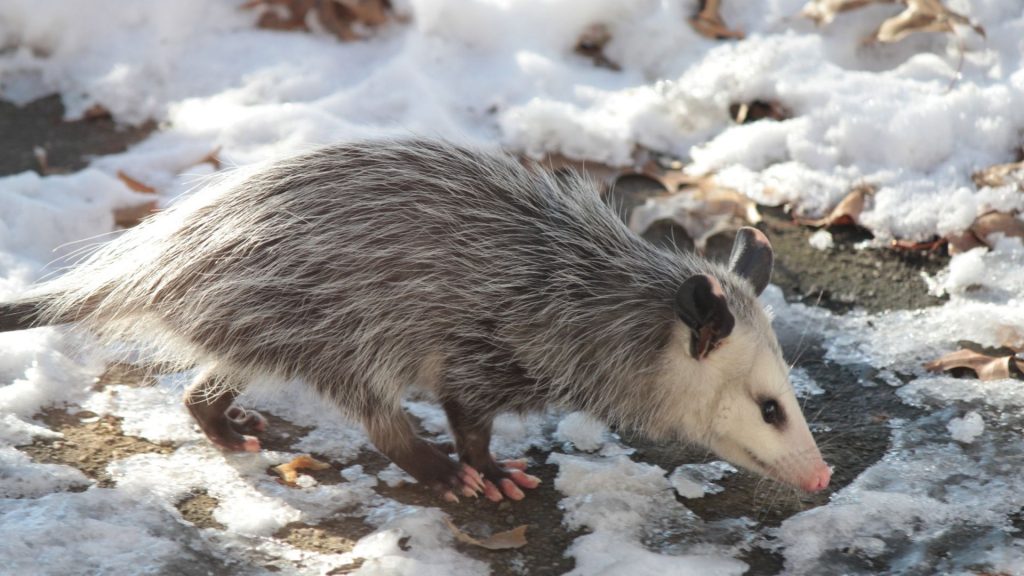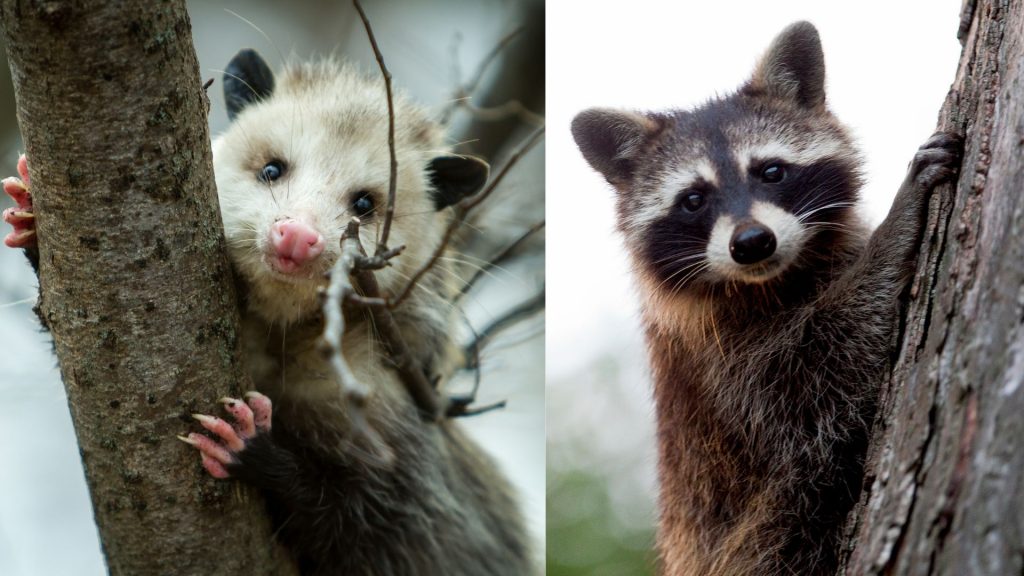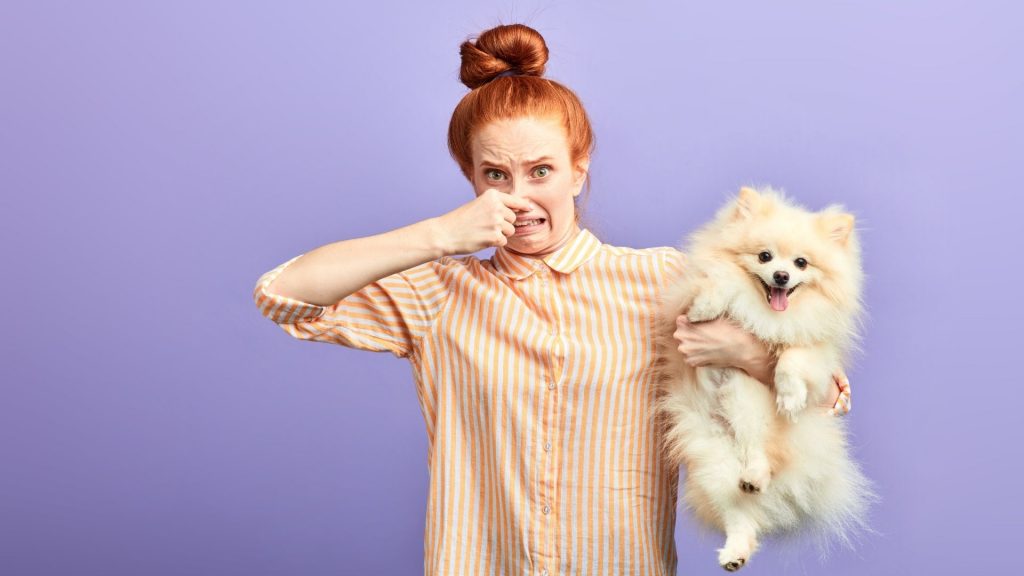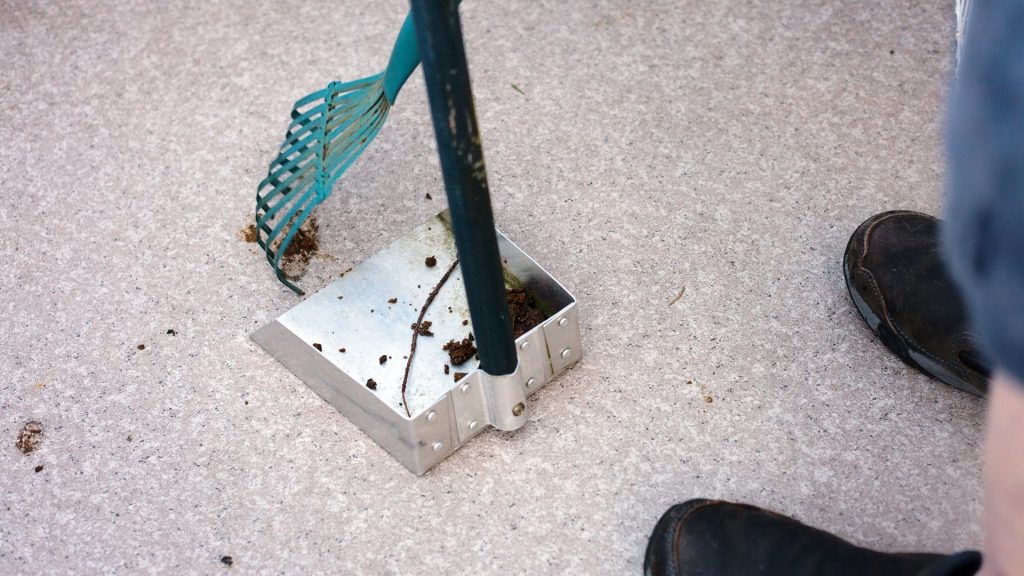Generally speaking, opossums are not dangerous or a threat to humans and pets. This is because these animals are not aggressive and don’t attack humans. However, they will get into your outdoor garbage cans or climb to your attic. Also, they will poop in your backyard, and this is when you should take action.
So, are opossum feces dangerous and toxic to humans and pets? Opossum feces and urine are very toxic and can make humans seriously ill through contact with contaminated soil, food, and water. They can affect dogs and horses, too. This is also why you should not allow opossums near them.

For the record, opossums and possums are two different animals. Both of them are marsupials. However, opossums are native in the US, while possums are native in Australia and New Zealand. Nevertheless, ‘opossum’ is pronounced with silent ‘O.’ Therefore, both animal names have the same pronunciation.
What Do Opossum Feces Look Like?

Opossum feces or droppings look like the poop of a house cat or a small dog. Their appearance will depend on the animal’s diet. Nevertheless, they can be ¾ inch in diameter and 1-3 inches long and have smooth sides as well as tapered ends. They are usually dark brown and curly as the opossum excretes the waste.
What Is the Difference Between Opossum and Raccoon Feces?

Opossum and raccoon feces have almost the same size. However, a raccoon poop has some seeds and undigested food and will break in the middle. This is because raccoons love to eat berries and nuts. Raccoons also love to poop in the same area. On the other hand, opossum poop is in one continuous pile only.
Just like opossums, raccoons also carry diseases on their feces. Their poop contains roundworm eggs, which are extremely harmful to pets and humans, especially small children. Likewise, opossum poop contains harmful bacteria and pathogens that cause serious diseases to humans and pets.
Where Do Opossums Poop?

Opossums poop wherever they are and sometimes in the same area where they last excrete their waste. This means you can easily find them almost everywhere, including swimming pools, attics, basements, garbage cans, and every corner of your backyard. And as expected, opossum poop smells very bad.
Opossums are also likely to poop in protected leafy areas and around their feeding zones. This is also the reason why you might mistake them for dog poop. Therefore, you should make sure that you can confirm if the poop is really from an opossum or not. Otherwise, you might be handling them incorrectly.
What Diseases Can You and Your Pets Get From Opossum Feces?

As mentioned earlier, opossum feces are very toxic because they carry serious bacterial diseases. Opossums can also transmit diseases through scratching and biting their enemies. However, opossums are very unlikely to attack. Therefore, below are some of the diseases you and your pets can get from opossum poop:
1. Leptospirosis
Leptospirosis is an infectious disease caused by bacteria of the genus Leptospira. It affects both humans and animals around the world, including cattle, dogs, horses, and pigs. This bacterial disease can easily be transmitted through contact with soil and water contaminated with infected animal poop and urine.
The first reported leptospirosis occurrence in an opossum was in 1953, and since then, several incidents have followed. For humans, among the symptoms of having leptospirosis are headache, high fever, and diarrhea. In most cases, infected persons will not show symptoms. In severe cases, patients may have meningitis.
2. Salmonella
Salmonella is a serious disease related to food poisoning. It can be found inside the intestines of infected animals such as reptiles, pigs, poultry, and opossums. This bacterial disease can spread once contaminated feces are made contact with water used for crop irrigation, which will later go to raw meat in the market.
Aside from eating raw meat contaminated with salmonella, pet owners and animal raisers can also get infected through handling or cleaning their animals. Note that some pets may not show any symptoms of the disease. Meanwhile, infected people may experience headaches, nausea, diarrhea, and vomiting.
3. Tularaemia
Just like Salmonella, tularaemia is a zoonotic disease which means it can spread between animals and humans. This disease is caused by a pathogenic species called “Francisella tularensis,” which can be acquired through ingestion, inhalation, and contamination of broken skin. It also has been detected in the feces of infected animals.
Tularaemia is known to be prevalent in wild animals and marsupials such as opossums. It is also seen in rodents, squirrels, rabbits, and some domestic animals, including cats, pigs, and horses. Nevertheless, cattle and dogs are less susceptible, and person-to-person transmission is very unlikely.
4. Coccidiosis
Coccidiosis is a parasitic disease caused by coccidian protozoa and usually affects the intestinal tract of animals. It is spread from one animal to another animal through contact with feces and urine of the infected animal such as opossums. However, most infected animals don’t show symptoms of the disease.
Among the domestic animals that are prone to having coccidiosis are chickens, and dogs, and cattle. Youngsters of the animals are usually being infected through the feces of their sick mother. Nevertheless, coccidiosis is not a zoonotic disease, which means humans cannot get this disease from infected animals.
5. Equine Protozoal Myeloencephalitis (EPM)
Equine Protozoal Myeloencephalitis (EPM) is a common neurologic disease of horses in the US. It affects the functions of the brain and spinal cord of the infected animal. Horses usually get this disease from eating food or drinking water that is contaminated with opossum feces that have Sarcocystis neurona.
Sarcocystis neurona is a protozoan parasite wherein opossums have been proven as definitive hosts. Among the symptoms that may be seen in infected horses are depression, facial paralysis, head tilt, and lameness. Fortunately, infected horses cannot pass this disease to humans and other horses.
Are Opossum Feces Dangerous to Touch or Breathe?

With the diseases mentioned above, it’s safe to say that opossum feces are dangerous to touch or breathe. But while touching opossums is quite safe because they rarely carry rabies, their poop carries serious illnesses. Also, opossum poop emits a very stinky odor, and you may inhale those parasites.
How to Get Rid of the Opossum Feces Smell?

You can only get rid of the smell of opossum feces once you have already cleaned the area where the animal poops. You should also get rid of the opossum and prevent it from coming back. To do that, you should know how to identify them, understand their behavior, and know the things they are attracted to.
1. Clean the Infected Area
As mentioned earlier, opossums may poop on attics, basements, and garbage cans and usually poop on the same area. Therefore, inspect those areas and wear the right PPE (personal protective equipment) while removing the poop. To eliminate the foul smell, use very strong disinfectants and an air freshener.
2. Get Rid of the Opossum
Opossums are 2-3 feet long (excluding the tail) or as big as a house cat. They have a conical head, pointed face, hairless ears, white or grayish hair, and a rat-tail which is well adapted for grasping. Their legs are short, and they have five toes on each foot. Interestingly, females have a stomach pouch for their babies.
Once opossums are frightened, they hiss or growl and bare their 50 sharp teeth. But instead of attacking, they will retreat or will “play possum” (play dead) until the predator goes away. Now that you know how opossums look, you can think of ways to get rid of them. But so far, the best technique is to trap them.
To catch an opossum via trap:
Step 1: Use fish or apple as bait. Canned pet food is also fine, but your cat might also be attracted.
Step 2: Place the trap near the opossum’s den shortly before nightfall.
Make sure you check the laws in your area on what you can do after you catch an opossum. You don’t have to kill them, though.
3. Prevent Opossum From Coming Back
To prevent an opossum from coming back or even going to your area for the first time:
- Eliminate all possible opossum access inside your house. This includes roof cracks and leaks, pet doors, the large gap among pipes and drains, and small holes in the wall.
- If possible, cut trees near your house.
- Also, cover your outdoor garbage cans properly so they won’t attract opossums.
- These cute creatures also eat pet food, so avoid feeding your pet dogs and cats outside.
- To scare them away, spread some pet fur around your area.
- But more importantly, try building a fence around your plant garden using chicken wire.
Summary
Opossums are not really considered pests because they also eat rats, cockroaches, and ticks. However, their feces are very toxic and dangerous to humans and pets because of the diseases they bring. This is why you should get rid of them. But again, your local laws may prohibit you from killing them.
Related: How To Get Rid of Opossums? | A Complete Guide
List of Sources
Baldwin, R., et al. (2015). How to Manage Pests in Gardens and Landscapes – Opossums. University of California Statewide IPM Program.
Vantassel, S., et al. (2007). Controlling Raccoon and Opossum Damage. University of Nebraska – Lincoln, Nebraska Wildlife Extension.
Opossums (Didelphis Virginianus). Washington Department of Fish and Wildlife.
McCoy, A. (2021). Protozoal Myeloencephalitis (EPM). University of Minnesota Extension.
Leptospirosis – Infections in Pets. (2015). Centers for Disease Control and Prevention – U.S. Department of Health & Human Services.
- How to Get Rid of Copperheads | Practical Guide - August 27, 2023
- How to Get Rid of Corn Snakes | What Makes Them Aggressive? - August 27, 2023
- How to Get Rid of Alligators | Safety Measures and Removal Methods - July 16, 2023
